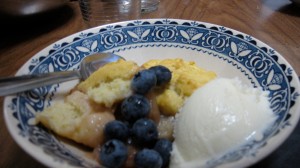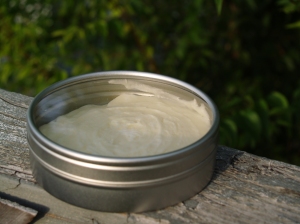
November 3, 2009
Work in Progress--Convertible Gloves/Mittens

Six months of my life....
were dedicated to this baby blanket. My boss and his significant other are expecting their first child this October, and I, rather excitedly, decided to knit them a baby blanket. I figure that handmade baby items tend to carry more emotional weight; when I was a child, I was pretty attached to the crocheted blankets and hand-sewn quilts that my maternal Grandmother made me. I knew that it was going to be a big project, but I didn’t realize exactly how long it was going to take. I’m glad I chose the easiest type of blanket imaginable- it’s straight garter stitch, with no fancy borders, meaning I could basically zone out and watch the entire season 5 of Buffy the Vampire Slayer while only having to pay attention to the colorwork. I read somewhere that newborn’s eyes can only really tell light from dark, and that high contrast colors would help them train their eyes to focus. I didn’t want to make a black and white blanket, so I chose two colors that would contrast nicely- pale yellow and dark blue. These colors are also the colors of the Brazilian soccer team, and since the mama-to-be is Brazilian and the father-to-be is a soccer fanatic, that worked out nicely, even though I didn’t plan it that way. Anyhow, I made the stripes in an alternating shuffle, so one end starts out blue and then the blanket fades to yellow, and vice versa!
I finished it with an hour to spare before I had to go to the baby shower! Frankly, after completing this task, I didn’t feel like knitting for a good long while, but unfortunately, with not a lot of disposable income lately, tons of yarn, and Christmas approaching, I have to get going on some presents for the family and the boyfriend. I find it pretty gratifying that, since finally learning how to knit two years ago (my aforementioned crafty Grandmother tried to teach me in vain when I was younger, but it never stuck), I’ve actually only made myself a scarf and a pair of gloves. Everything else has always been for other people! With that in mind, I did decide to sit down and make myself something new for the fall- a ribbed cowl. It’s already almost done, so I hope cooler weather will soon come to Louisiana so I can wear it out and about. Optimistically, fall will be here in about another month, but really, it most likely won’t be cool enough until November. Sigh.
November 2, 2009
Labor Day
Peach Cobbler 
 with Farmers' Market peaches, ginger and cinnamon.
with Farmers' Market peaches, ginger and cinnamon.
We served it with blueberries and vanilla soy dream. My entire Labor Day weekend basically revolved around my craving for Peach cobbler.
Homemade Scones and having a well-stocked kitchen

Quick and Easy Hand Cream
Oh, Burt's Bees, that ubiquitous "eco-friendly" all-natural company that creates type of product that used to trigger all of my must-buy-this-tube-of-expensive-lip-balm or lotion or whatever. I have never been a girly girl and I have never particularly wanted any certain cosmetic. But Burt's Bees was an exception- almost everything they produced, I wanted, price be damned. Six dollars for a tube of lip balm? Sure! Nine dollars for some soap? That is not at all ridiculous!
Except, of course, it is. It's embarrassing for me to realize that I was as hooked on the idea of that if a certain company made a product, then the product was inherently worth whatever the price they were asking. And then I read an article that the NYTimes ran back in January of 2008 that highlighted the fact that Burt's Bees is now owned by Clorox. Now, the jokes about this supposedly green company being bought for 300million dollars by Clorox can write themselves, so I won't harp on that. Frankly, though, I didn't want to continue to buy overpriced cosmetics where the profits would go into a large corporation. It no longer seemed like supporting a local economy, and it no longer felt like I was using a handmade product, or treating myself to a guilt-free indulgence.
So, once I ran out of my last treasured bottle of Burt's Bees Almond Milk Hand Cream, I figured I'd have to find a substitute. And after thinking on that for a minute, I decided that I wanted to make my own, because hey, if what I really liked about Burt's Bees' product was the illusion of using something homemade, than I probably should just go ahead and make my own.
And it was super easy.
Ingredients:
2 1/2 oz of blended oils (I used almond)
1 1/2 oz coconut oil
1/2 oz beeswax
4 oz purified water
30 drops grapefruit seed extract
1/4 tsp borax (to prevent separation of oils)
essential oils for scenting, if desired
I bought the majority of my ingredients from Whole Foods. I procured the beeswax from some beekeepers/honey vendors I met at a craft fair in Ely, Minnesota; they were selling it for five dollars a pound! I would imagine that any local beekeeper would be glad to sell their wax, so it shouldn't be hard to find some. Originally, I had the bright idea of trying to render my own beeswax from actual honeycomb that came with a jar of locally produced New Orleans' honey, but it was sort of a mess and took a long time and I only ended up with 1/8 of an ounce of purified, rendered beeswax so I don't really recommend going that route.
So! To make this quick project, you take the blended oil, the coconut oil, and the beeswax and put them in a stainless steel pot and let them melt together on very low heat, stirring only occaisionally. Once they've melted together, you remove it from the heat and add in the water and borax, and mix it all up with a hand blender. The mixture instantly creams up into a thick, smooth lotion! You then stir in the grapefruit seed extract and any oils you want to use to scent it. I actually didn't use any oils for this batch, though I had some rose extract on hand to use in case I didn't find the scent appealing enough. But I shouldn't've worried- the cream smells so sweetly of honey! I actually far, far prefer both the texture and the scent of this hand cream over Burt's Bees. And this one batch produced two rather large tins of cream! I put one in the fridge to store and have one on my nightstand right now, where I am trying to avoid using it every few hours. 
Next up: Lip balm! Unless I get distracted by another idea.
Masala Tea Time!
Masala tea is more commonly known as chai. Chai is the drink many youngsters discover freshman year in college, when their tongues prefer the spicy sweetness of chai over bitter black coffee, thus finding a drink to order with confidence at the local cool coffee shop before panicked study sessions to learn the transitive tense in French. I actually didn't go through that phase- I thought chai tasted kinda goofy, and I thought ordering it was even goofier. Much like the clove cigarette of the tobacco world, once you saw someone drinking chai, you knew they were a drama major.
Obviously my opinion of Masala tea (which is what I am going to refer to it as for the rest of the post, since what I'm about to discuss is pretty different from what you'd get at the average American coffee shop) has changed. I decided to do a study abroad for my last summer in college, and, since I studied East African political systems, went to Tanzania. Tanzania is (obviously) on the east coast of Africa, right underneath it's better known but less stable sister state of Kenya. There were many, many great things about Tanzania, but, for the sake of brevity and for relevance, I'm going to talk about Tea Time.
Tea Time was every afternoon. Everyone in the program, students, teachers, other people staying at the compound we were based at, all stopped whatever else they were doing and gathered in a large outdoor gazebo and drank ungodly amounts of wondrous spicy mystery tea and ate peanuts. It was excellent, a little ritual that afforded everyone a mutual break. So many people talk about how the US needs to institute siestas, but screw that noise. Tea time. Tea time is where it is at.
The fact is, I did not know that this delicious tea that we drank in Tanzania was "chai". It tasted much, much better- the spices were stronger and tasted more fresh, and it wasn't overwhelmingly sweet. And actually, I didn't figure out that it was chai until last week. Because obviously I am really smart.
Last week I found myself in Minneapolis for two days, just to hang out. I was told to stop by a place called the International Coffee House for coffee, which, after many attempts, I did. I mention this because this coffee house does not have hours posted and is not open before noon, at least, as I tried to get a drink there at about 9am on a Tuesday morning, and then again a little after noon, and then went back past 7pm to finally claim my prize. And prize it was, because, as the windows proclaimed, this coffee house was a Somali business, and it sold "African Chai".
And after drinking that amazing tea again, I decided I had to know how to make it. So I tracked down a recipe and made it tonight! First, the specs. You need:
2 inches of fresh ginger, sliced thin 7 cardamom pods 11 whole cloves 1 pod of star anise 2 sticks of cinnamon fresh ground pepper 4 cups water 6 black tea bags 3 cups milk 1/2 cup sugar 1 whole vanilla bean
Now, first off, cardamom isn't cheap but it's a good spice to invest in. It's great in curries, and a must for lentils. The only thing I had to go out and buy was the star anise, which smells like licorice. As far as the black pepper goes, I just did about 3 turns of my pepper grinder.
So what you do is you throw your first six ingredients into a pot and "bruise" them. I took a wooden spoon and mashed the spices about a bit- broke open some cardamom pods, broke up the star anise, the cloves, etc. Then you pour in the water and bring to a boil. At first I thought something was wrong because my kitchen started smelling awful, but I soon figured that it was something my roommate had spilled on the burner. The actual mixture started smelling pretty good really quick!
Once you've got a boil going, you take it off the heat and add the tea bags to steep. I used Constant Comment because I had a bit of a brain freeze in the grocery store aisle and couldn't really find a basic black tea due to all the crazy fancy teas they're marketing these days, so I just grabbed one that I knew was tasty and probably would be a good base. Plus, when I was a kid, I definitely thought Constant Comment was the best name ever, so I've been a fan ever since.
Once you steep your tea and it cools a bit, you add the milk, sugar, and vanilla bean and then bring it all back up to a simmer. Be sure to slice open your vanilla bean lengthwise so all the little beans are exposed to the liquid. I even waited for the tea to get pretty warm and then fished the vanilla bean out and scraped my wooden spoon along the pod to get all the goop out, and then mixed them in with the tea, just to make sure the vanilla flavor would come through well.
Then, you run it all through a strainer and you're done! You have really tasty, nice and spicy Masala tea. It's not exactly the same as the tea I got in the International Coffeehouse or in Tanzania, but it is delicious all the same! I think it would be pretty easy to veganize this recipe, and I'm definitely going to experiment some more with different spice ratios and combinations to see how close I can get it. I did take pictures of this process, but since I was doing this at night in my crappily lit kitchen, none of them are good.
And yeah, yeah, yeah, this is definitely a winter drink, but it was cold in Minneapolis!
November 1, 2009
Knitted Necklace
I made this Seven Circle Necklace , which I found on Ravelry. Mine didn't turn out as clean as the other projects on Ravelry, probably because I used a thicker wool yarn that I had laying around. Surprise, it's mustard-colored. I should really introduce some variety into my accessories.
I'll have to wait until Fall to wear it, but for now it's sitting on my shelf looking pretty. Please excuse the circa-2001 makeoutclub pictures. The light was nice and there was no one else home to take my picture.





